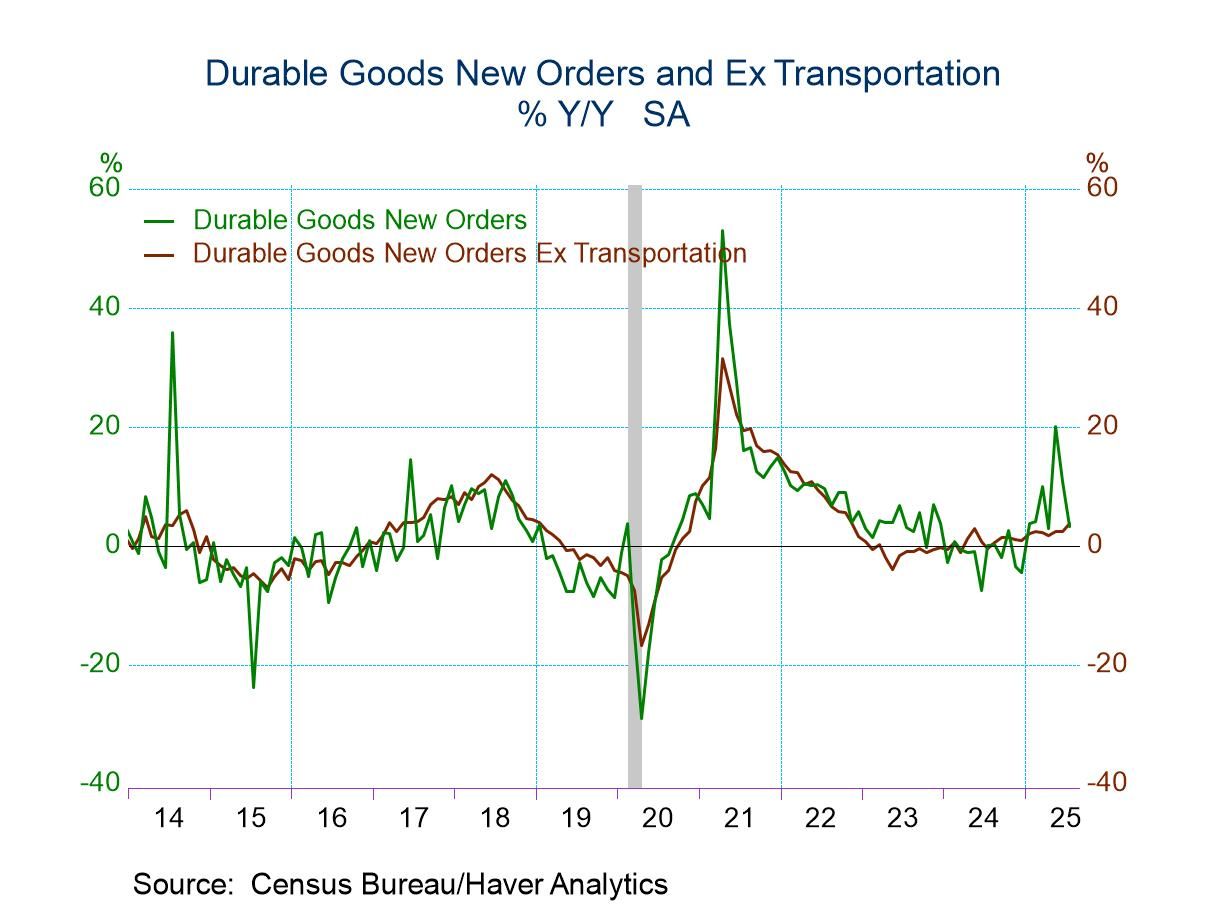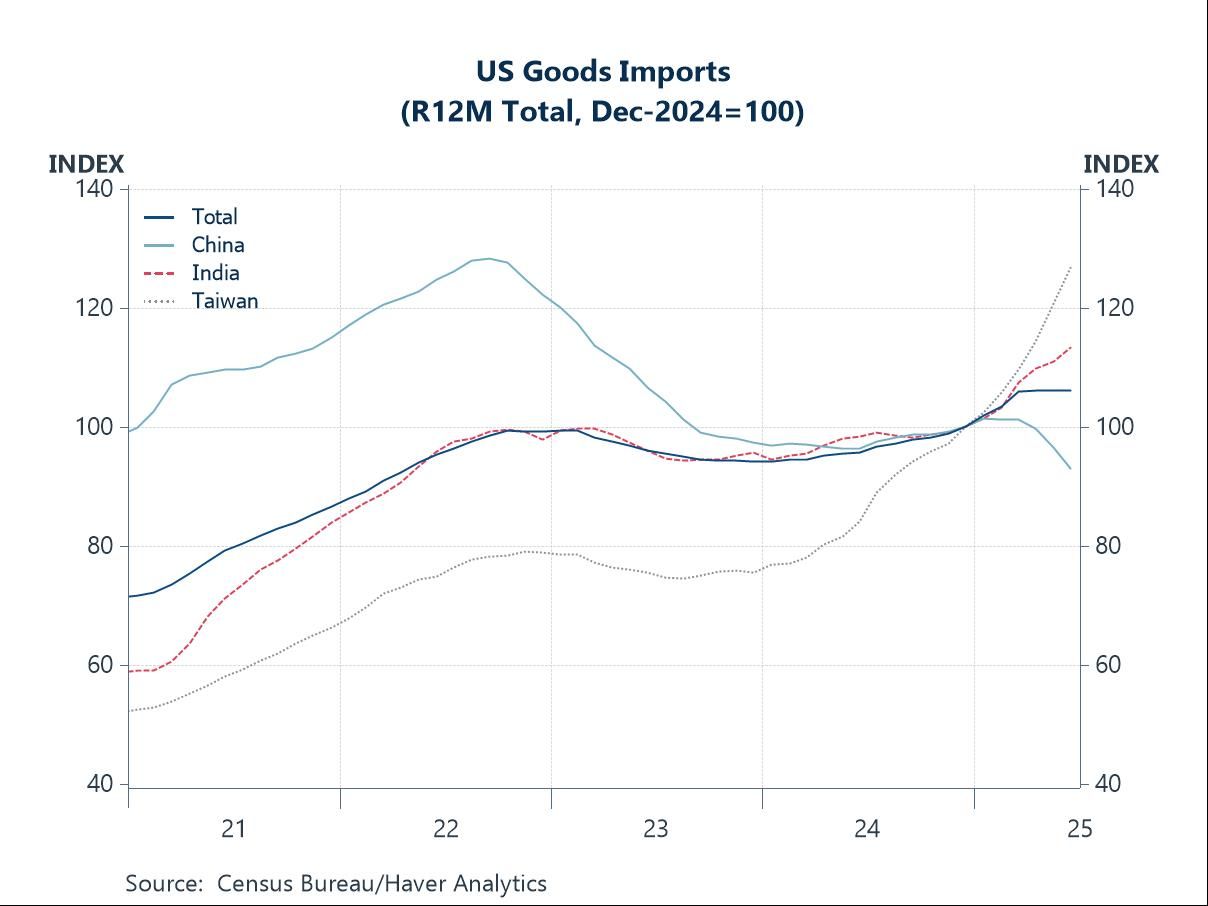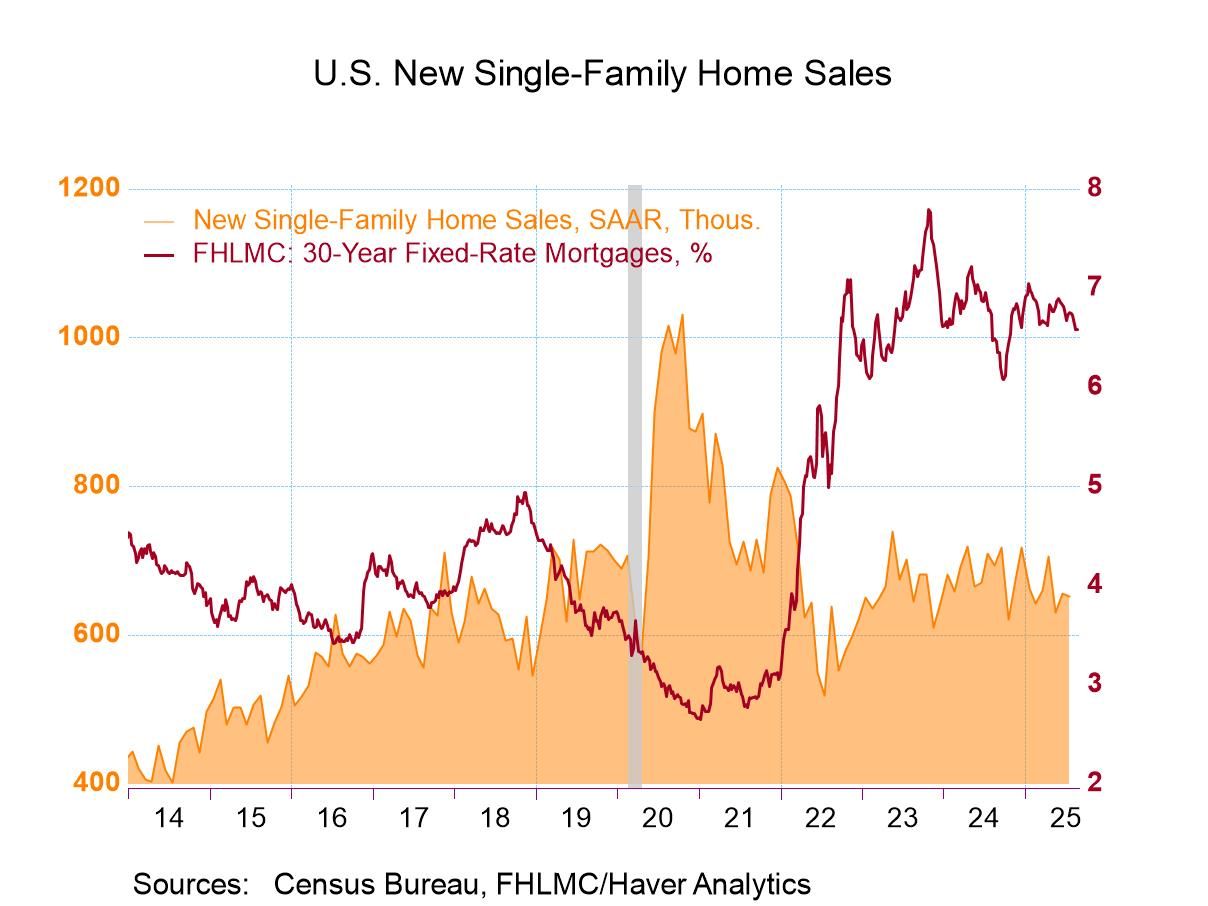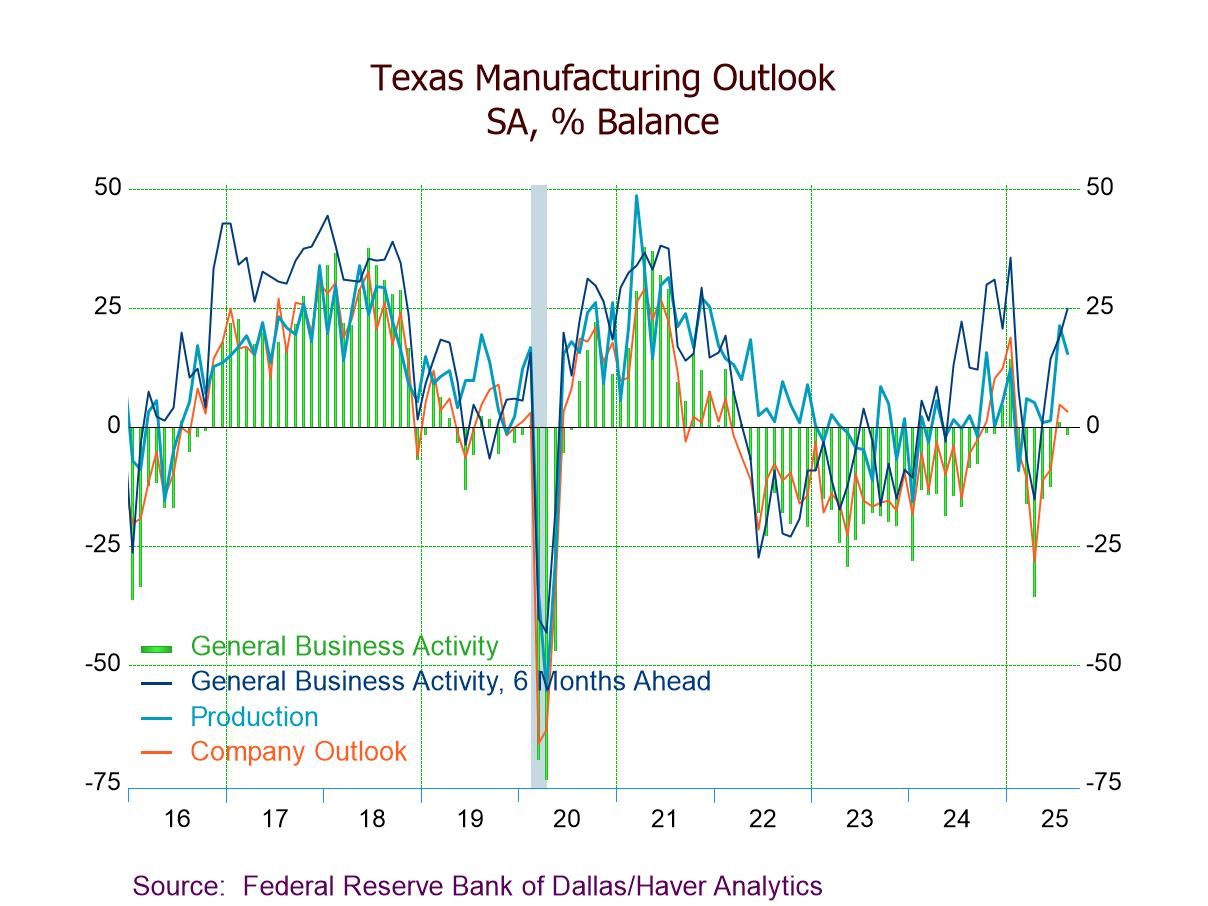 Global| Jul 19 2010
Global| Jul 19 2010EMU Current Account Deficit Widens
Summary
The EMU current account deficit widened in May and is fluctuating in a higher deficit zone. Both merchandise exports and imports are accelerating but goods imports are outpacing goods exports in the Zone on all horizons. Services [...]
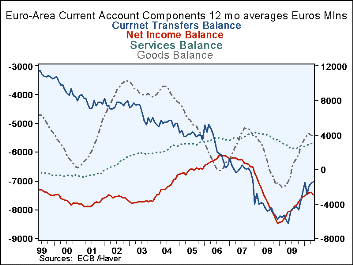 The EMU current account deficit widened in May and is fluctuating in a higher deficit zone. Both merchandise exports and imports are accelerating but goods imports are outpacing goods exports in the Zone on all horizons. Services imports recently have surged and over three-month are stronger than services exports by a wide margin. The income accounts are showing increasing net outflows as are current transfer payments.
The EMU current account deficit widened in May and is fluctuating in a higher deficit zone. Both merchandise exports and imports are accelerating but goods imports are outpacing goods exports in the Zone on all horizons. Services imports recently have surged and over three-month are stronger than services exports by a wide margin. The income accounts are showing increasing net outflows as are current transfer payments.
Despite some well-documented increases in exports of key EMU countries, overall EMU imports are now growing faster than exports. As the euro itself has made a significant rebound from its cycle low there is some loss of competitiveness over that period, but one would expect that with the euro having been so strong for so long the main trend is that the euro is lower and more competitive than it had been than that it has backed tracked from a briefly-visited lower level. Still there is this backing-tracking to deal with in trying to understand monthly current account flows and some economic agents can take of advantage of even brief shifts in exchange rate values.
The increase in the income flow reflects repatriations of profits by foreign firms operating within the zone. As the economy picks up those outflows will increase but there will be offsets from the earnings of EMU-based companies with operations abroad that will repatriate profits to the Zone (even if only in accounting terms). There are also transfers of funds paid out from workers that reside in the Zone but remit payments to those in a domicile outside of the Zone itself. Such payments result in outflows. Then there is tourism. The strength the Euro has kept tourism at bay but as the euro moved lower a European vacation became more attractive to euro-outsiders. That attractiveness is diminished somewhat by the euro's nascent rebound.
A number of factors combine to create the current account position. For Europe the deficit is a mark of some economic improvement in economic conditions within the zone. But over the past year, the net balance of the account is due mostly to one of its relatively minor accounts, net income. Over the last 12 months transfers have totaled 84bln euros balanced by a nearly equal 84bln surplus on trade and services. The net different on the current account has been made by net income flows that have posted 35bln of net outflows over the period leaving the current account in deficit by about 35bln euros.
The goods and services balance has been volatile but the 'net transfers item in the EMU current account has been a relentlessly rising steam of out-payments. Recession has knocked that trend down but new Euro-Area transfer payments seem to on a clear advancing trajectory while the balance which tends toward surplus on goods and services trade has no such offsetting up-trend feature. The balance on the remaining account, the income account, has no clear trend and has differing cycle characteristics than that for net goods and services. Looking at the current account balance and its underlying component trends you can see why Europe wants to export. Its net export and net services revenues, large as they are, mostly offset huge outflows on their transfer account. Its one of the reasons why Germany is not very flexible when pressed by the US over its entrenched exporting, persistent surpluses and weak domestic demand. Much of the income it generates, as is the case for EMU, gets shipped overseas.
| Euro-Area Current Account Major components | ||||||
|---|---|---|---|---|---|---|
| Month-to-Month | Period changes | |||||
| Mlns, euros | May-10 | Apr-10 | Mar-10 | 3-Mos | 6-Mos | 12-Mos |
| Current Account | -5,800 | -5,600 | 1,500 | -1,300 | -2,600 | -2,900 |
| Goods Balance | 3,100 | 600 | 3,400 | -2,200 | -1,700 | -900 |
| Services Balance | 3,100 | 4,000 | 4,500 | -500 | 1,200 | 700 |
| Income Balance | -4,400 | -3,000 | -800 | -2,900 | -300 | -3,200 |
| Current transfers | -7,600 | -7,200 | -5,500 | 4,300 | -1,800 | 600 |
| Detail- % | ||||||
| Goods | Month-to-Month | At Annual Rates | ||||
| Exports | 5.8% | -1.7% | 6.3% | 49.6% | 42.1% | 25.1% |
| Imports | 3.8% | 0.6% | 8.3% | 63.1% | 48.1% | 27.0% |
| Services | ||||||
| Exports | 2.7% | 0.5% | 3.6% | 31.0% | 12.7% | 5.6% |
| Imports | 5.8% | 2.0% | 1.1% | 41.6% | 7.1% | 4.3% |
Robert Brusca
AuthorMore in Author Profile »Robert A. Brusca is Chief Economist of Fact and Opinion Economics, a consulting firm he founded in Manhattan. He has been an economist on Wall Street for over 25 years. He has visited central banking and large institutional clients in over 30 countries in his career as an economist. Mr. Brusca was a Divisional Research Chief at the Federal Reserve Bank of NY (Chief of the International Financial markets Division), a Fed Watcher at Irving Trust and Chief Economist at Nikko Securities International. He is widely quoted and appears in various media. Mr. Brusca holds an MA and Ph.D. in economics from Michigan State University and a BA in Economics from the University of Michigan. His research pursues his strong interests in non aligned policy economics as well as international economics. FAO Economics’ research targets investors to assist them in making better investment decisions in stocks, bonds and in a variety of international assets. The company does not manage money and has no conflicts in giving economic advice.



